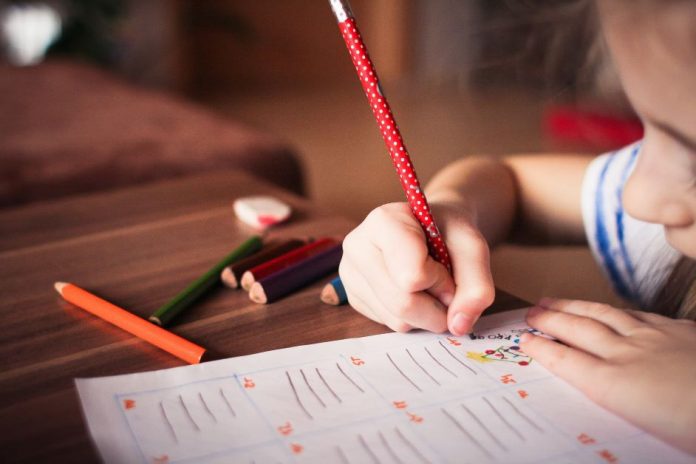It is now almost two weeks since the majority of children returned to school following lockdown measures.
And while for many families the return to school has been an immense relief, for parents as well as children, for some it will underline the problem of a one size fits all education system.
For some families, the intervention of unexpected home schooling will have shone a spotlight on this. Children are all different and very often learn differently – and the demands of a Government-led curriculum all too often fail to accommodate this .
For many parents (mainly mothers as has been well documented), home schooling has been tough. Completing 8-hour workdays while helping your child navigate pronouns, fractions and spellings for three to four hours is an impossible ask. Many employers were unsupportive to say the least.
Yet despite the late nights at the laptop, parents will have stepped up in their child’s hour of need. And while for many this will have been easier than they imagined, some parents will have been shocked at their child’s mindset, lack of self-esteem, and, let’s be honest, the gaps in their knowledge.
Home schooling is not an easy choice to make on many levels, as the pandemic has certainly shown us. There is the need to work to pay bills for most people, the social aspect and, of course, the teaching skill set to consider.
But apparently lockdown home schooling has seen a rise in parents choosing to permanently home school their children.
And this will be no doubt be because the one size fits all state education system does not work for everyone.
Every parent or grandparent will be familiar on some level, with friends if not in their own home, of conversations such as ‘ they really struggle with maths, but English is no problem’ or ‘ their talents lie in creativity, not science or maths’.
Age differences within a year group and ‘natural’ ability are obvious differences but learning and the school experience as a whole can be hugely impacted by many other factors. Socialisation issues, anxiety, low self-esteem, hearing problems, undetected sight issues and, of course, neurodiversity. The main problem is that schools do not have the support from Government, financially, or in policy, to address this.
For too long education has been a political football, to the point where if you have been out of school long enough the terminology and grading may well mean nothing to you (and I’m talking 15-20 years, not 50).
There have been past efforts to increase vocational learning, but academic learning remains firmly at the heart of education. Creativity, such as learning an instrument, meanwhile has become, quite honestly, something for those who can afford it. Sports are heading that way too as huge year groups leave little incentive for making it onto the school team or even participating – parents instead need the time and resources to ferry their child from club to club.
More than that though is the issue of learning styles, some schools that are well-managed and resourced have exceptional SEN staff, who work hard to promote inclusive learning and to offer one-to-one support. But there is only so much they can do.
If a child needs to learn through visuals and drawing, or kinaesthetically through action, there is little opportunity for a teacher leading 30 plus children to make this a regular feature of the classroom while striving to make sure primary pupils are primed to pass their SATs.
Home schooling allowed some parents, with the time, to really see this and to home in on their child’s needs. Building up their self-esteem free from peer pressure and working on strategies to understand basic maths as well as reading books that bring a love of reading alive.
Some children might not like the school staples of football or netball, but in lockdown home school I bet some of those kids had a great time cycling, hiking up The Cloud, skating and following Joe Wicks’ workouts. One size does not fit all in sport as well.
Rather than look to our schools for answers it is the Government we need to hold to account.
Our local schools do a fantastic job in leading learning for young people. They celebrate their achievements, make space where they can for creativity and engage pupils through dynamic approaches to delivering the curriculum.
They do all this on the tightest of budgets with the tightest resources, often dedicating their own time.
In a class of 30 plus, it is inevitable that the needs of some children will not be met. Many parents are lucky; their child just ‘gets it’, but sometimes even those children need a little support. In a class of 30 children when, say two children just don’t understand how fractions work, can a teacher fully accommodate that and the needs of 28 plus other children? Yes, there is a teaching assistant on hand, but we are looking at 30 kids – that is a lot of individual needs to be met.
Schools do what they must to meet Government targets, and this is where a one size fits all education fails. It fails children in the same way that chronic education underfunding does, and oversized classrooms.
Very often parents complain about the silent majority. They are the children who reach their targets each year without causing trouble. They just turn up every day and do what is asked of them. They don’t ask for awards, don’t shout out in class, they just get on with it. How many of these are quietly struggling though? Too often a teacher’s time is diverted elsewhere because they have no choice. The support (in terms of finances and subsequent staffing) is not there from the Government.
This is why some parents will have seen home schooling as an eye opening experience and made the decision to continue.
Big class sizes are inevitable when schools receive cash for every pupil on their roll – they are essential. But surely our children deserve an education that gives them the best chance in life, and a top-down approach to support that.




